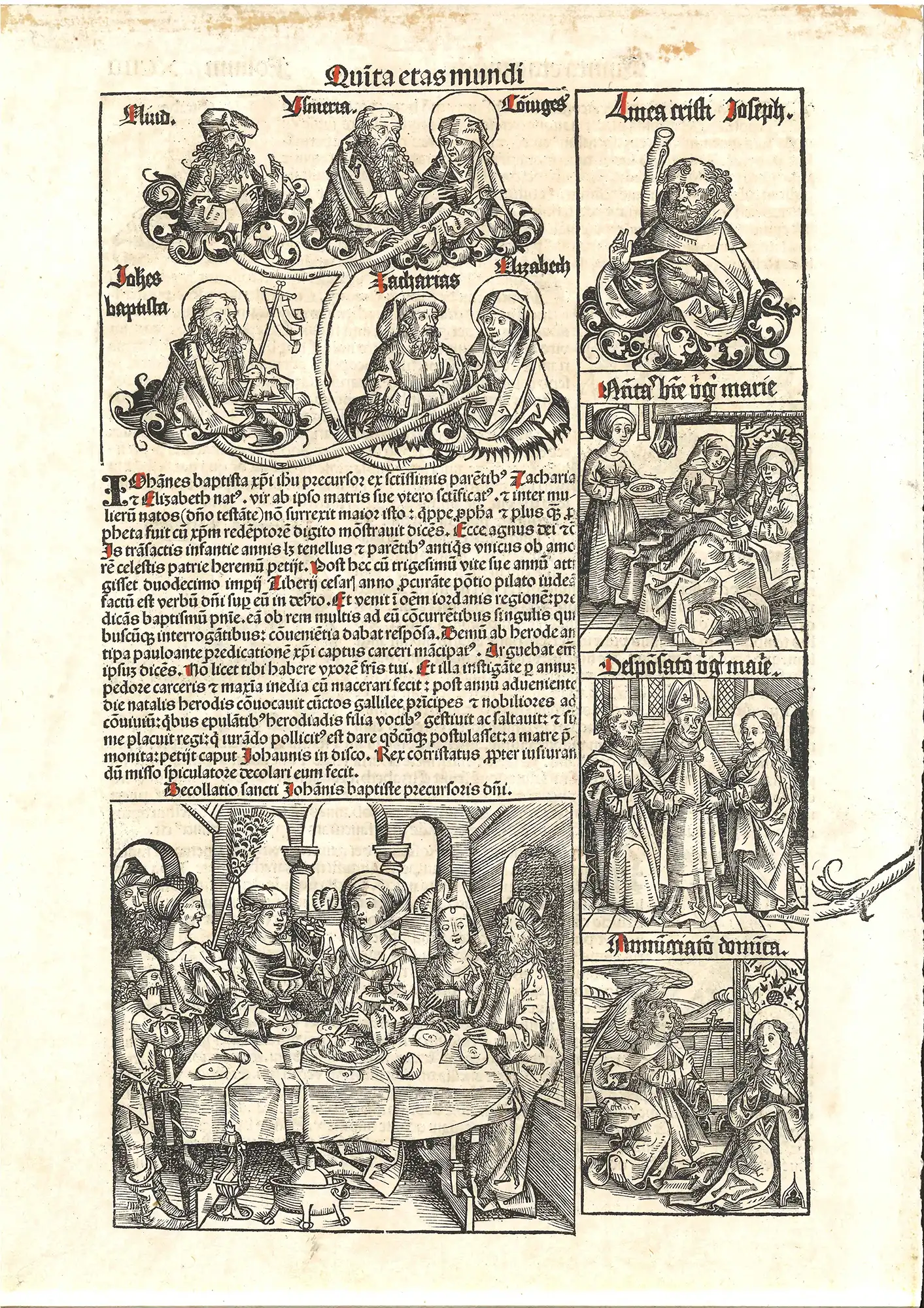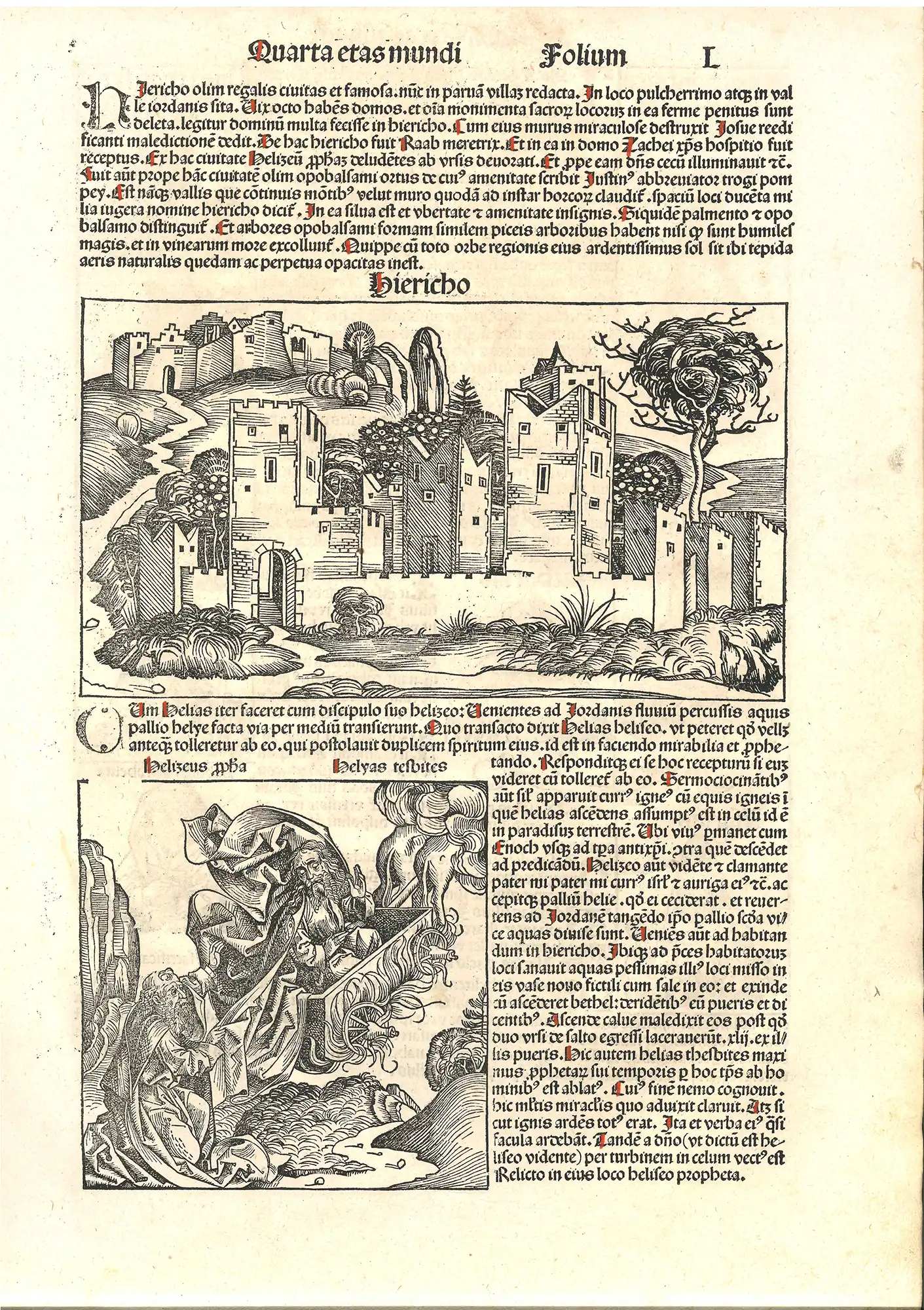Case 4
- Nuremberg Chronicle

Hartmann Schedel. Liber chronicarum. Nuremberg: Anton Koberger, 1493. Single leaf.
Printing spread rapidly from Mainz to other cities, and by 1500 printing presses had been established in about sixty German towns. In south Germany, Nuremberg, an imperial city significant in international banking and trade, became especially prominent.
The largest German printing house of the fifteenth century was owned by Anton Koberger (ca. 1445-1513). He set up a press in Nuremberg in 1470, and for a time combined printing, publishing, and bookselling. At his peak he ran 24 presses served by more than 100 compositors, proof-readers, pressmen, illuminators, and binders.

Hartmann Schedel. Liber chronicarum. Nuremberg: Anton Koberger, 1493. Single leaf.
Commonly known as the Nuremberg Chronicle, the Liber chronicarum is an illustrated world history by the Nuremberg doctor, bibliophile, and humanist Hartmann Schedel (1440--1514). Perhaps the most sumptuous of Koberger’s publications, it contains some 1800 woodcuts by Michael Wolgemut (1434-1519), best known as the teacher of Albrecht Dürer.
The text is divided into seven ages and follows the story of human history as told in the Bible. The displayed leaves are from the Fourth Age, including sections from the description of Jericho to Naboth ‘the Jezreelite’; and the Fifth Age, including sections on Strabo to the beheading of John the Baptist.

